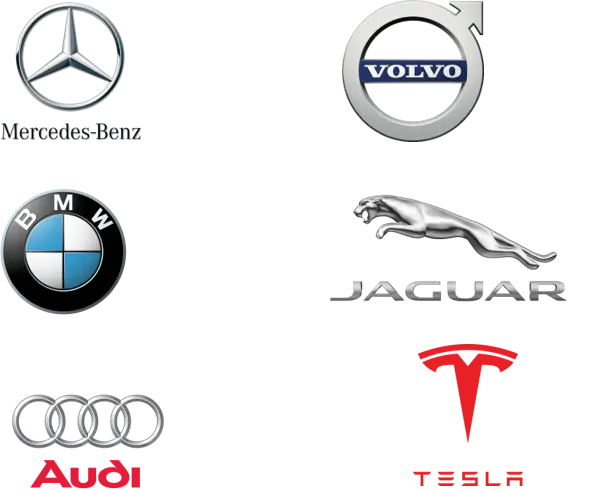Market Size of Asia Pacific Luxury Cars Industry

| Study Period | 2019 - 2029 |
| Base Year For Estimation | 2023 |
| Forecast Data Period | 2024 - 2029 |
| Historical Data Period | 2019 - 2022 |
| CAGR | > 6.40 % |
Major Players
*Disclaimer: Major Players sorted in no particular order |
Asia-Pacific Luxury Car Market Analysis
The Asia-Pacific market is poised to register a CAGR of over 6.40% over the forecast period.
- In 2018, the overall vehicle production in Asia-Pacific declined by 1.78% due to the global economic slowdown. Asia-Pacific holds the largest market share in the global luxury car market.
- Despite a generally weaker development of the Chinese car market, the segment of premium and luxury vehicles continues to grow. According to the Chinese Automobile Manufacturers Association, the luxury sedans grew by 18.8% and premium SUVs 3.5%. The price segment over JPY 300,000 (USD 44,000), about 1.16 million vehicles, was sold in 2018. All major manufacturers of luxury vehicles, including Mercedes-Benz, BMW, and Audi, reported positive figures in November 2018.
- The sales of luxury cars in India registered a slump of approximately 13% in 2019 compared to 2018. The drop came due to economic downturn, high import tariff, and the anticipation of relief in goods and services tax (GST) rates, which weighed on demand.
Asia-Pacific Luxury Car Industry Segmentation
The Asia-Pacific luxury car market covers the latest sales trends, government policies and technological development in the luxury car market, and market share of major luxury car manufacturers across the Asia-Pacific countries.
| By Vehicle Type | |
| Hatchback | |
| Sedan | |
| SUV |
| By Drive Type | |
| IC Engine | |
| Electric |
| Geography | |||||||
|
Asia Pacific Luxury Cars Market Size Summary
The Asia-Pacific luxury car market is a significant player in the global automotive industry, holding the largest market share. Despite challenges such as economic slowdowns and fluctuating demand in certain regions, the market continues to experience growth, particularly in the premium and luxury vehicle segments. China, in particular, is a key driver of this growth, with a substantial number of high net worth individuals who are increasingly drawn to luxury goods and services, including high-end cars. The market is characterized by the presence of major luxury car manufacturers like Mercedes-Benz, BMW, and Audi, who have reported positive sales figures even amidst broader market challenges. The region's luxury car market is expected to be led by China, followed by Japan and India, with ongoing government initiatives and policy changes aimed at boosting sales and expanding market reach.
The market dynamics in the Asia-Pacific region are influenced by several factors, including technological advancements, rising living standards, and increased investment in research and development. Major luxury car manufacturers are forming strategic partnerships with technology providers to enhance the luxury experience, as seen in the collaboration between Daimler AG and BMW AG on autonomous driving technology. Additionally, companies like Mercedes-Benz are focusing on transitioning to electric and hybrid vehicles to cater to evolving consumer preferences. The Indian market, despite facing challenges such as high import tariffs and economic downturns, is seeing efforts from the government to stimulate luxury car sales through tax reductions and financial support. Overall, the Asia-Pacific luxury car market is poised for continued growth, driven by a combination of consumer demand, technological innovation, and supportive government policies.
Asia Pacific Luxury Cars Market Size - Table of Contents
-
1. MARKET DYNAMICS
-
1.1 Market Drivers
-
1.2 Market Restraints
-
1.3 Industry Attractiveness - Porter's Five Forces Analysis
-
1.3.1 Threat of New Entrants
-
1.3.2 Bargaining Power of Buyers/Consumers
-
1.3.3 Bargaining Power of Suppliers
-
1.3.4 Threat of Substitute Products
-
1.3.5 Intensity of Competitive Rivalry
-
-
-
2. MARKET SEGMENTATION
-
2.1 By Vehicle Type
-
2.1.1 Hatchback
-
2.1.2 Sedan
-
2.1.3 SUV
-
-
2.2 By Drive Type
-
2.2.1 IC Engine
-
2.2.2 Electric
-
-
2.3 Geography
-
2.3.1 By Country
-
2.3.1.1 China
-
2.3.1.2 Japan
-
2.3.1.3 India
-
2.3.1.4 Australia
-
2.3.1.5 Rest of Asia-Pacific
-
-
-
Asia Pacific Luxury Cars Market Size FAQs
What is the current Asia Pacific Luxury Cars Market size?
The Asia Pacific Luxury Cars Market is projected to register a CAGR of greater than 6.40% during the forecast period (2024-2029)
Who are the key players in Asia Pacific Luxury Cars Market?
Mercedes Benz, Bayerische Motoren Werke AG (BMW), Volvo Group, Jaguar Land Rover and Audi AG are the major companies operating in the Asia Pacific Luxury Cars Market.

